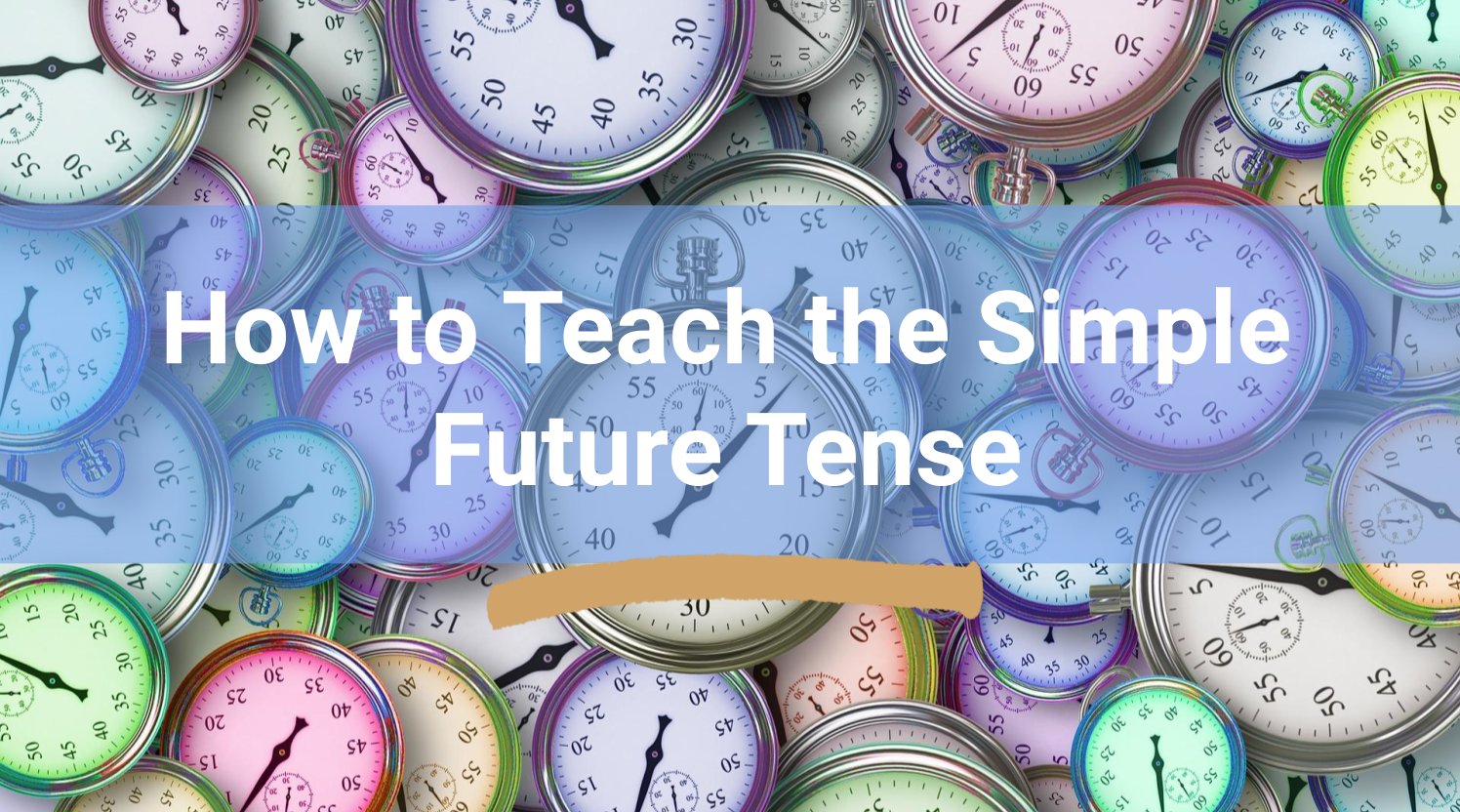How to Teach the Simple Future Tense


Have you ever wondered what will have happened by a specific moment in the future? For example, by the year 2020, what kinds of technological devices will have been invented? Will teachers have stopped giving face-to-face classes entirely? The future perfect tense is rather hard for ESL students. Usually upper-intermediate to advanced students are taught this tense, which is not even used by native speakers most of the time. How can you teach this difficult tense in a way that is painless for both you and your students?
Introduce the Future Perfect with a timeline
Several of the more complex tenses, are best understood when we place events within a timeline. And this is precisely the case with the future perfect. We use this tense to say an action will be finished at a certain time in the future. So, draw a timeline on the board, one that starts with today and extends towards the near future. Below write several examples of things that will happen soon, but before the Christmas holidays.
- Juan will finish a project.
- He will take some exams.
- He will plan a ski trip to Aspen.
Mark these events in your timeline in the right order. Say, “By the end of this year, John will have finished his project. He will have taken some exams. He will have planned a ski trip to Aspen.”
Make sure students understand these actions will be finished by a specific time (the end of the year). Illustrate how the future perfect tense is formed: will + have + past participle (for all persons)
Practice the Future Perfect tense
Ask your students to give you more examples of things they’ve planned for the rest of the school year:
S: I will learn to drive. I will get my driver’s license. I will drive to Disney World.
T: When you drive to Disney world, you will have known how to drive for only a few weeks.
Ask students to provide more examples. It can be anything they foresee happening in the near future: By the time, we finish this course, I will have turned 18. When I graduate from high school, I will have decided where to go to college.
You may also tell them they can make predictions for the future; they may get as bold as they wish:
By the time I’m 40, I will have become CEO of an important company.
Give your students this worksheet where they have to make predictions about Life in 2015.
Introduce the Future Perfect tense – Negative forms
Give examples of negative statements, based on the information your students have shared: Juan, by the time you finish this course, you won’t have turned 20; you will have turned 18. Sarah, when you graduate from high school, you won’t have decided where to apply for a job; you will have decided where to go to college.
Ask students to provide more examples by predicting the future: By the time I finish college, I won’t have gotten married.
Introduce the Future Perfect tense – Interrogative forms
Ask students questions about what they expect in their future:
T: Will you have graduated from college by the time you’re 22?
S: No.
T: Ask a classmate!
S: Carlo, will you have graduated from college by the time you’re 22?
Model a few more questions, then, have students come up with questions on their own. In the Life in 2015 worksheet, students also interview a character and ask him questions in future perfect.
Introduce the Future Perfect tense – Short answers
Have students ask you questions and introduce short answers:
S: Will you have retired from teaching in 2020?
T: Yes, I will/No, I won't.
Students now take turns asking each other questions and replying with short answers.
Provide plenty of opportunities for extended practice
If students are not given chances to extensively practice the future perfect tense, chances are they won't feel confident enough to use it. Try some of the exercises and activities found in our Future Perfect section. Here you’ll also find worksheets that contrast the different future tenses to boost their confidence.
If possible, try to find real examples of how this tense is used. Some good sources are newspaper articles, blog posts, and advertisements that deal with the future effects of our present mistakes. For example, you may find articles that discuss the effects of global warming, and mention that by the year 2020, all of the snow on the peak of Mount Kilimanjaro will have melted. You will not only help them practice the future perfect, you will also teach them the importance of caring for the environment. Another valuable lesson, indeed.